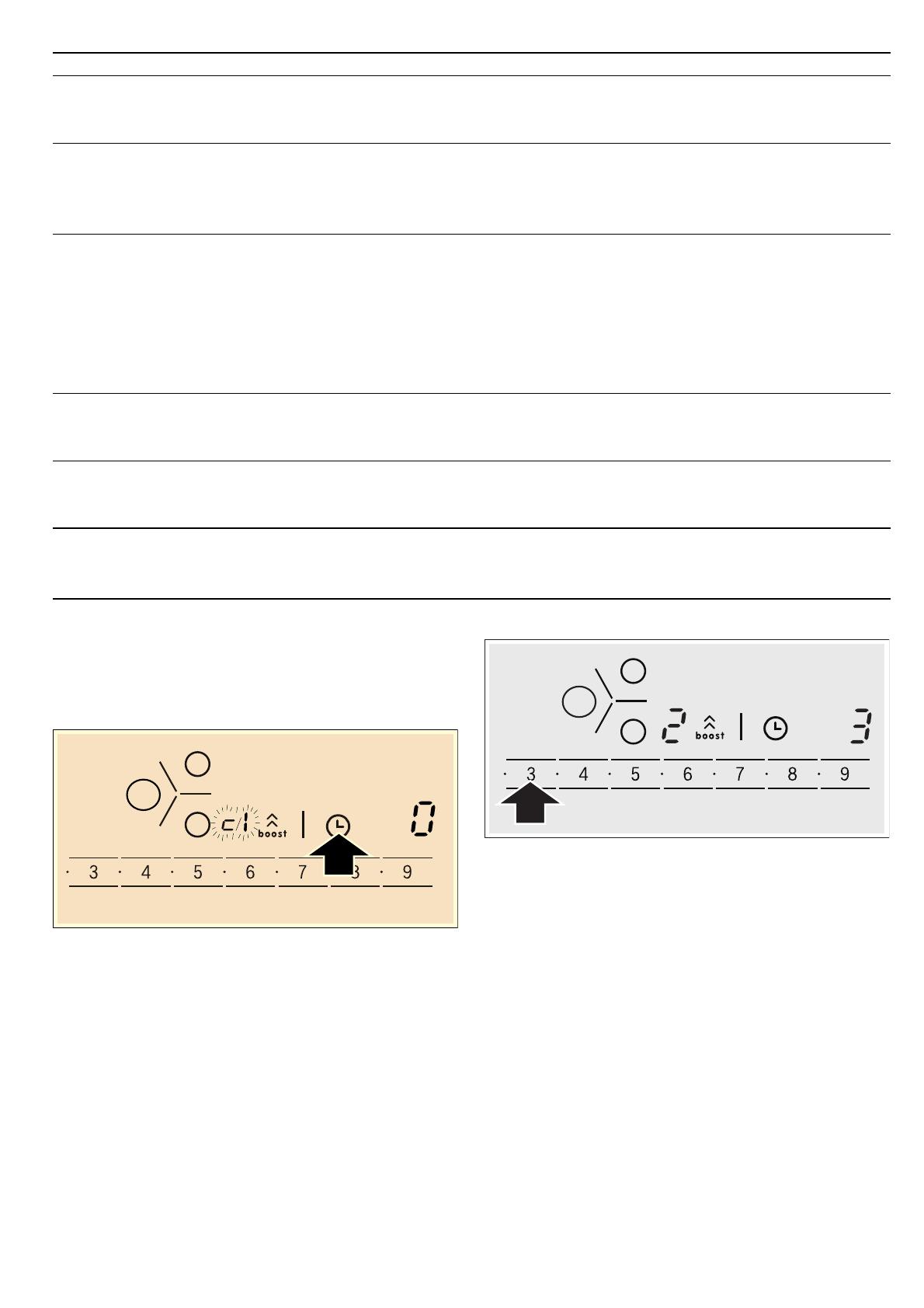
10
Protecting the environment
Environmentally-friendly disposal
Dispose of packaging in an environmentally-friendly manner.
Energy-saving advice
■ Always use the correct lid for each pan. Cooking without a lid
uses a lot more energy. Use a glass lid to provide visibility
and avoid having to lift the lid.
■ Use pans with flat bases. Bases that are not flat use a lot
more energy.
■ The diameter of the pan base must match the size of the
hotplate. Please note: pan manufacturers usually provide the
diameter for the top of the pan, which is usually larger than
the diameter of the pan base.
■ Use a small pan for small amounts of food. A large pan which
is not full uses a lot of energy.
■ Use little water when cooking. This saves energy and
preserves all the vitamins and minerals in vegetables.
■ Select the lowest power level to maintain cooking. If the
power level is too high, energy is wasted.
Induction cooking
Advantages of induction cooking
Induction cooking represents a radical change from the
traditional method of heating; the heat is generated directly in
the pan. It therefore offers a number of advantages:
■ Time savings for cooking and frying; since the pan is heated
directly.
■ Energy is saved.
■ Care and cleaning are simpler. Foods that have spilt do not
burn as quickly.
■ Heat and safety control; the hob supplies or cuts off power as
soon as the control knob is turned on. The induction hotplate
stops supplying heat if the pan is removed without having
previously switched it off.
Cookware
Only ferromagnetic pans are suitable for induction cooking;
these may be made from:
■ enamelled steel
■ cast iron
■ special stainless steel induction pans.
To determine whether a pan is suitable, check to see if a
magnet will stick to its base.
There are other types of cookware for induction whose base is
not entirely ferromagnetic.
Unsuitable pans
Never use diffuser hobs or pans made from:
■ common thin steel
■ glass
■ earthenware
■ copper
■ aluminium
Characteristics of the pan base
The characteristics of the pan base may affect the uniformity of
the cooking results. Pans made from materials which help
diffuse heat, such as stainless steel sandwich pans, distribute
heat uniformly, saving time and energy.
Absence of pan or unsuitable size
If no pan is placed on the selected hotplate, or if it is made of
unsuitable material or is not the correct size, the power level
displayed on the hotplate indicator will flash. Place a suitable
pan on the hotplate to stop the flashing. If this takes more than
90 seconds, the hotplate will switch off automatically.
Empty pans or those with a thin base
Do not heat empty pans, nor use pans with a thin base. The
hob is equipped with an internal safety system. However, an
empty pan may heat up so quickly that the "automatic switch
off" function may not have time to react and the pan may reach
very high temperatures. The base of the pan could melt and
damage the glass on the hob. In this case, do not touch the
pan and switch the hotplate off. If it fails to work after it has
cooled down, please contact the Technical Assistance Service.
Pan detection
Each hotplate has a minimum limit for detecting pans, which
varies depending on the material of the pan being used. You
should therefore use the hotplate that is most suitable for the
diameter of your pan.
This appliance is labelled in accordance with
European Directive 2012/19/EU concerning used
electrical and electronic appliances (waste electrical
and electronic equipment - WEEE). The guideline
determines the framework for the return and recycling
of used appliances as applicable throughout the EU.
When using large cookware on a
smaller ferromagnetic area, only
the ferromagnetic zone heats up,
so heat might not be uniformly
distributed.
Pans with aluminium areas
inserted in the base reduce the
ferromagnetic area, so less heat
may be supplied and the pan
may be difficult to detect or not
be detected at all.
For good cooking results, the
diameter of the cookware's ferro-
magnetic area should match the
size of the hotplate. If cookware
is not detected on a hotplate, try
it on the next smaller hotplate
down.



















